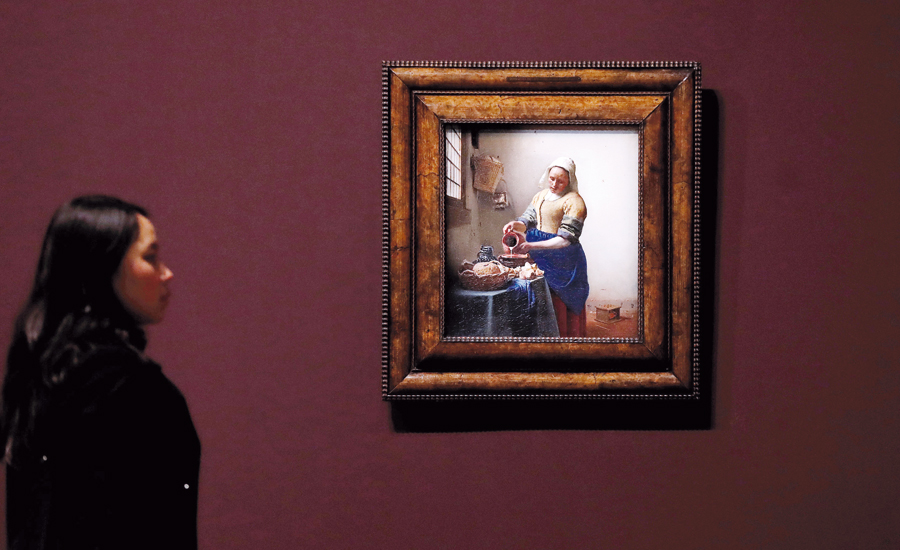


A new blockbuster Vermeer exhibition which opens on Wednesday aims to smash the myth that the Dutch master was a solitary genius who worked alone at home cut off from the world.
The Louvre in Paris has gathered a third of the 17th-century painter’s canvasses for the show — the most ever shown in one place since his death — where they will hang alongside nearly 60 paintings by his friends, rivals and contemporaries.
“We wanted to do away with the stereotype of Vermeer as ‘the Sphinx of Delft’,” said Blaise Ducos, who is in charge of the museum’s vast collection of Dutch and Flemish paintings.
Despite his reputation as one of the greatest painters of the Dutch Golden Age, Vermeer was all but forgotten after his death in 1675.
His reputation was only revived in the late 19th century.
With so little known about the enigmatic painter who died in poverty, it was assumed that he worked alone at his home in Delft.
All but one of his 34 known works are set within its four walls, from the “Girl with a Pearl Earring” to “The Music Lesson”, giving the impression, said Ducos, that Vermeer rarely ventured out.
But “Holland at that time was like New York”, Ducos said, an artistic, banking and trading powerhouse, where painters competed for the patronage of its rich merchants.
INTENSE RIVALRY
Vermeer stole and borrowed from his peers including Gerrit Dou, Gerard ter Borch, Jan Steen and Gabriel Metsu, Ducos insisted, all of whose work is featured in the show.
“Vermeer and his contemporaries constantly tried to surpass each other’s work in technical prowess and aesthetic appeal,” said Adriaan Waiboer, of the National Gallery of Ireland, which has also been working on the show for six years.
“Their creative rivalry contributed to the exceptionally high quality of their work,” he added.
While the “Girl with a Pearl Earring” will not be leaving its home in The Hague, Vermeer’s other great iconic work, “The Milkmaid”, has been loaned to the Louvre for show, which will later travel to Dublin and Washington DC.
The painting, known as the “Mona Lisa of the North”, is regarded as a symbol of the Dutch nation, and beyond the Netherlands “has a huge place in the collective consciousness”, Ducos argued.
The Dutch Republic into which Vermeer was born was the richest country in the world, he added, the birthplace of modern capitalism, its vast wealth built on a powerful navy and its booming East India Company.
It also produced an unprecedented artistic flowering, with artists led by Rembrandt and Frans Hals producing a staggering five million works in the newly independent Netherlands over the course of the 17th century.
PAINFULLY SLOW PAINTER
Vermeer, however, anything but prolific.
Although he used the very best and most expensive pigments, he was so meticulous and painfully slow at the easel that he died deep in debt at the age of 43.
Ducos said a 2001 show at the Metropolitan Museum of Art in New York — “Vermeer and the Delft School” — had already explored his links with other painters in the town.
But the Louvre exhibition extends the web of “possible plagiarism, emulation and quotation” out across the rest of Holland.
Often, as the show makes clear by counterpointing “The Music Lesson” with his rivals’ work, Vermeer was at the end of the chain, often taking on other people’s ideas and magnifying them brilliantly.
“Vermeer and the Masters of Genre Painting: Inspiration and Rivalry” runs at the Louvre until the May 22 before travelling to the National Gallery in Dublin in June.
The show crosses the Atlantic in October to the National Gallery of Art in Washington, where it will be open until the end of January 2018. — AFP
Oman Observer is now on the WhatsApp channel. Click here



